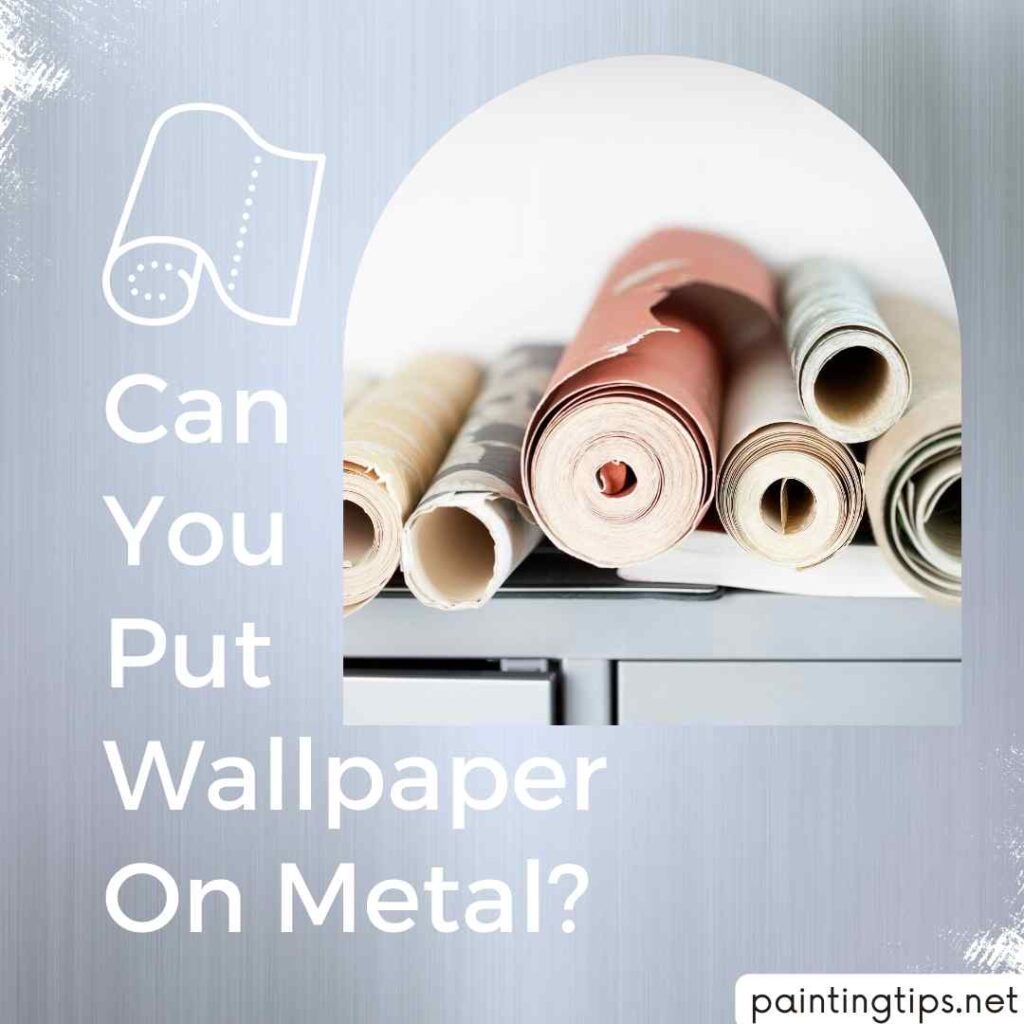Can You Put Wallpaper on Metal?
Wallpaper traditionally adheres to absorbent surfaces like drywall and wood. Standard wallpaper adhesives are specifically formulated for these porous materials, which means they typically won’t work effectively on non-porous metal surfaces. While you can’t directly apply traditional wallpaper to metal with standard adhesives, several specialized methods make it possible to successfully wallpaper metal cabinets, boxes, or furniture.

Why Standard Wallpaper Adhesives Don’t Work on Metal
Metal surfaces are non-absorbent, creating a fundamental challenge for traditional wallpaper installation. Standard adhesives can’t penetrate the surface, resulting in poor adhesion. Even if the wallpaper initially seems to stick, it will likely begin peeling at the edges within a short time.
How to Put Wallpaper on Metal
Before attempting any wallpaper application on metal, proper surface preparation is essential. Once prepared, you can use one of these four reliable methods to secure wallpaper to metal surfaces:
1-Using Ready-to-Use Wallpaper Adhesive
Ready-to-use liquid wallpaper adhesives differ significantly from standard powder-based products. These specialized adhesives offer substantially stronger bonding power, making them ideal for heavy-duty wallpaper applications. Their enhanced formulation creates a reliable bond even on challenging surfaces like metal.
- Clean the metal surface thoroughly to remove any dust, grease, or residue.
- Apply the ready-to-use adhesive evenly across the metal surface.
- Allow the adhesive to become tacky according to the manufacturer’s instructions.
- Carefully position and smooth the wallpaper onto the prepared surface.
- Smooth out any air bubbles or wrinkles using a wallpaper smoothing tool
2-Priming Metal Surfaces Before Wallpaper Application
Creating a suitable foundation through priming dramatically improves wallpaper adhesion on metal. Several primer options work effectively:
Recommended Primers
- Glossy Surface Primers: Specifically designed for shiny, non-porous surfaces. These may be marketed under various names depending on your region, but generally contain “glossy surface primer” in their description.
- Concrete Primers: These create a slightly textured surface that enhances adhesion. Available at most hardware and home improvement stores.
- Transition Primers: Apply a single layer of transition primer and allow a full 24-hour curing period before proceeding with wallpaper installation.
- Clean and degrease the metal surface.
- Apply your chosen primer according to the manufacturer’s instructions.
- Allow the primer to dry completely (usually 24 hours).
- Proceed with standard wallpaper application once the primer has fully cured
3-Applying Wallpaper with Contact Adhesive
Contact adhesives offer versatile bonding capabilities across numerous materials, including metal surfaces. This method works particularly well for smaller metal objects like filing cabinets or decorative boxes.
- Apply contact adhesive to the metal surface using a brush or roller.
- Allow the adhesive to become tacky (typically 4-5 minutes).
- Carefully position the wallpaper onto the prepared surface.
- Press firmly to ensure complete adhesion.
- Use a roller or smoothing tool to eliminate air bubbles.
4-Using Self-Adhesive Wallpaper on Metal
Self-adhesive wallpapers (also called peel-and-stick) represent the most straightforward solution for metal surfaces. These products feature a pre-applied adhesive layer specifically formulated to bond with non-porous surfaces.
- Thoroughly clean and dry the metal surface.
- Measure and cut the self-adhesive wallpaper to size.
- Gradually peel back the backing while smoothing the wallpaper onto the metal.
- Work slowly to avoid trapping air bubbles.
- Trim excess material as needed.
Frequently Asked Questions
Can You Use Peel-and-Stick Wallpaper on Metal?
Self-adhesive (peel-and-stick) wallpapers provide the most effective and user-friendly solution for metal surfaces. They perform exceptionally well on smooth, shiny metal surfaces and require minimal preparation beyond thorough cleaning.
Can You Put Wallpaper on Stainless Steel?
Standard wallpapers will not adhere directly to stainless steel surfaces. However, two effective approaches can make wallpapering stainless steel possible:
Apply an absorbent primer first: This creates a suitable surface for traditional wallpaper adhesion.
Use self-adhesive wallpaper: The pre-applied adhesive is specifically formulated to bond with non-porous surfaces like stainless steel.
Can You Put Wallpaper on a Metal Door?
Yes, you can put wallpaper on a metal door, but proper preparation is essential for good adhesion. Start by cleaning the surface with a degreaser to remove dirt and oils, then lightly sand it to create a rough texture. Applying a primer designed for metal can further improve adhesion. Peel-and-stick wallpaper is the easiest option, but traditional wallpaper with strong adhesive can also work. When applying, smooth out air bubbles with a squeegee or cloth and seal the edges with extra adhesive or a clear sealant to prevent peeling. For durability, especially in high-traffic areas, vinyl wallpaper is a great choice. “Related article: How to repaint a front door without removing it.”
Can you use wallpaper on metal cabinets?
Yes, you can use wallpaper on metal cabinets, but proper preparation is key for long-lasting results. Start by cleaning the surface with a degreaser to remove dust, dirt, and grease. Lightly sanding the metal will create a better grip for the wallpaper. Peel-and-stick wallpaper is the easiest option, but traditional wallpaper with strong adhesive can also work. Smooth out any air bubbles with a squeegee or cloth, and seal the edges with extra adhesive or a clear sealant to prevent peeling. For durability, especially in kitchens or offices, vinyl wallpaper is a great choice. “Related article: How to paint a metal file cabinet.”